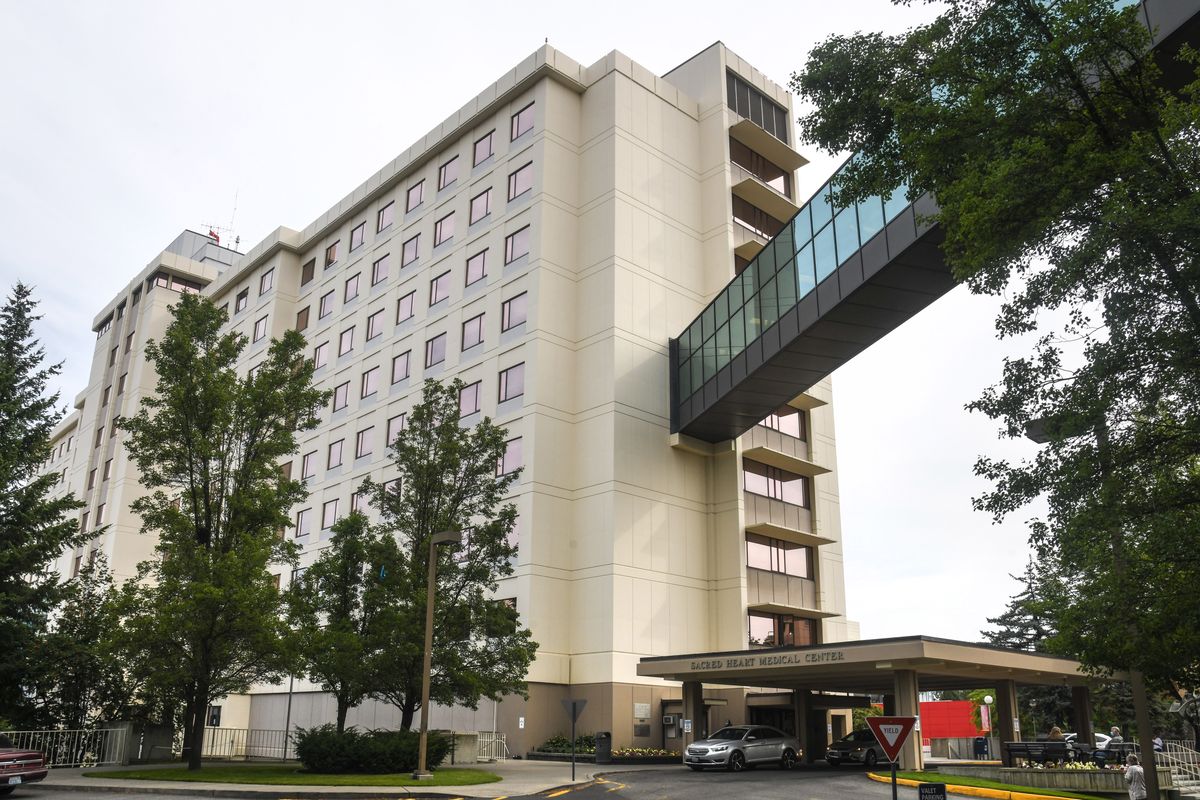COVID-19 hospitalizations at record high in Washington and Spokane County

There are more people hospitalized for COVID-19 in Spokane County – and Washington state – than ever before in the pandemic.
The majority of those people are unvaccinated. In Spokane , more than 90% of patients hospitalized with the virus are unvaccinated, according to hospitals and the health district.
The delta variant has led to a statewide surge in COVID-19 hospitalizations .
Hospitals were already quite full, however, and most facilities were also experiencing staff shortages and clogs in the state health care system before the surge began in late July.
Hospitals have already tightened visitor restrictions, canceled and postponed nonemergency procedures, and desperately tried to hire traveling staff.
Now, leaders are concerned about what the next few weeks could hold.
“We are at the point now where we really are stretched thin,” said Dr. Dan Getz, chief medical officer at Providence Health in Spokane. “If we don’t do something to halt the progression of this disease, we are going to be in a situation in Washington state potentially in the matter of a week or two where we no longer have the capacity to care for patients.”

There are 248 people hospitalized with the virus among the four Spokane County hospitals and Kootenai Health. Statewide, there are 1,240 people hospitalized with the virus in Washington, exceeding previous statewide records set in December, when 1,100 patients were hospitalized with the virus at the same time.
Statewide, hospital officials are begging those who have yet to be vaccinated to do so. Even in counties with much higher vaccination rates than Spokane County, hospitals are full of COVID patients, indicating an uncertain future for the surge ahead.
The only reason no hospital has been completely overwhelmed is the Washington Medical Coordination Center, a patient transfer center anchored at Harborview Medical Center, which has been in operation throughout the pandemic.
The center helps transfer patients, both COVID and non-COVID, across facilities in the state to ensure they are getting the level of care they need. Often, the WMCC is helping rural hospitals transfer patients to larger hospitals for more intensive care.
If it weren’t for WMCC, the state would have already seen hospitals overrun with patients, Cassie Sauer, CEO of the Washington State Hospital Association, told reporters Thursday.
“Our hospitals are meeting regularly to reaffirm their commitment that no hospital go into crisis standards (of care),” Sauer said.
WMCC has never been busier, said Mark Taylor, director of operations . The surge in COVID patients is affecting non-COVID patient transfers throughout the state.
In the Inland Northwest, that means rural patients might have to wait to be transferred to Seattle or farther instead of to Spokane.
If hospitals reach population levels that prevent them from accepting new patients, it could lead to substandard care.
“If you live in one of these smaller communities and require a higher level of medical care, and you can’t find a hospital to transfer to, you might be stuck with, say, a heart attack in a small rural ER where they can’t put a stent in you, and you might be receiving substandard care,” said Providence’s Getz.
Spokane hospitals are not at the point of turning away patients yet, but the call volume to the WMCC has skyrocketed this month, and it is getting increasingly difficult to transfer patients.
Getz said hospitals in Washington are also receiving requests from Oregon, Idaho and Montana to take patients.
Sauer, with the hospital association, said they are working with numerous state agencies to free up space in hospitals by discharging patients who don’t need to be hospitalized, but are waiting for a bed at a skilled nursing home, adult family home, with their family or to another specialty facility.
At local Providence hospitals, there are more than 80 patients who could be discharged if they had somewhere to go. State agencies, including the Department of Social and Health Services, as well as the Health Care Authority, are working with hospitals to discharge these patients more quickly, Sauer said.
Getting those patients discharged could free up beds and staff members for other patients.
In Spokane County, Medical Reserve Corps volunteers are being called on to help provide care in some of these step-down facilities, such as long-term care and nursing homes, where staffing challenges are also impacting how many patients they can take on.
Getz said it has been much more difficult to discharge patients to facilities in the midst of COVID challenges and staffing shortages.

Here’s a look at local numbers:
The Spokane Regional Health District reported 216 new COVID-19 cases and two additional deaths on Thursday.
There have been 709 deaths due to COVID-19 in Spokane County.
There are 164 people hospitalized for the virus in Spokane.
The Panhandle Health District confirmed 111 new COVID-19 cases and no additional deaths.
There are 92 Panhandle residents hospitalized for the virus.